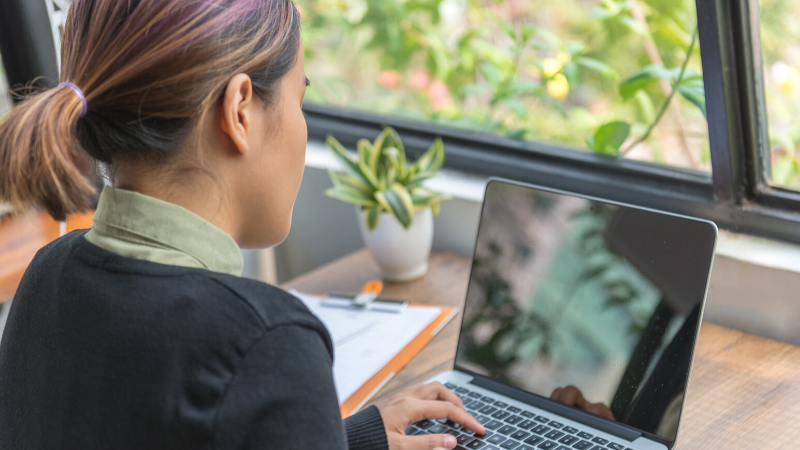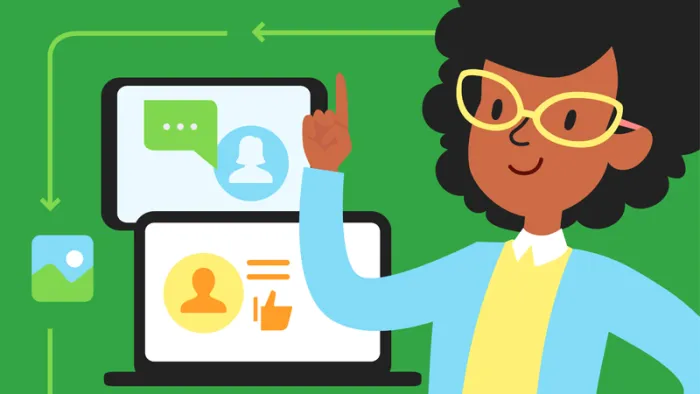One teacher shares how he uses social media to improve his teaching.

"Teacher Voices": This article is part of a series of from-the-classroom perspectives.
"My brother is talking to like five girls and he’s only in fifth grade," said one of my high school students.
"Fifth grade! Five girls? He actually talks to them?" I asked.
"No, he sends messages on the Musical.ly app."
There was a bit of laughter from some of my other students as they thought about how embarrassing it was to go to such lengths to talk to someone. But a different thought struck me: You can send messages on Musical.ly?
I consider myself well-versed in social media. I was an early adopter of Twitter and Instagram, and I remember anxiously waiting for Facebook to become available on my college campus. I've given most social media platforms a test run in my classroom and try to keep up-to-date on the latest trends, apps, and uses.
But keeping up with students is a whole other story.
Educators tend to meet most social media platforms with skepticism, and it's easy to see why. There have been plenty of news stories about isolated incidents where things have gone wrong. However, these stories project an unfair sense that all social media use in the classroom is nefarious. Teachers who might have otherwise taken a chance on social media are dissuaded by the stigma; teachers who might see themselves as "not a tech person" have yet another reason not to try.
For me, social media has been one of the most valuable tools I've used in my teaching career, chiefly because it's allowed me to tune into who students are and what they need.
If you're a teacher looking for a reason to give social media a shot, consider a few of the benefits that people don't often discuss:
1. You’ll build rapport with your students.
When we engage on social media, we aren't just a part of students' lives for the 55 minutes we see them in class; we can instead be more invested in them as people.
In my pre-teaching studies, I was lucky to observe in a room with a teacher who believed in the power of investing in his students. He believed in taking every opportunity to get to know his students better, and his efforts had a clear impact on the classroom atmosphere and student learning. Social media now provides an easy way to maximize this investment.
2. You’ll know what your students are facing.
Every school has major incidents, and chances are they erupt on social media. After all, school is in session for less than eight hours a day, and students are active on social media at all times. If, for example, something happens on a Friday night, think about how dire the situation could be by the time everyone arrives at school on Monday morning. Do we want to be blindsided with no knowledge about what's going on? These situations have the potential to be awful. When we’re involved on social media, however, we’re more connected to our school community. We can stay in the know, and we can react swiftly and responsibly.
This goes the other way too. How many successes do students have outside of school that can go unnoticed? Being tuned in on social media allows us to be a part of students' victories as well.
3. You’ll build digital citizens.
If we as teachers don't show students how to use social media, who will? Digital citizenship is one of the most important skills for 21st-century learners to be aware of, yet too often, we don't see it as our role to teach students how to behave online.
For better and for worse, most students are self-taught when it comes to technology. They learn by watching their peers, social media influencers, and whoever else popular culture throws at them.
Many teachers keep separate personal and professional profiles. I use one profile because I want to model good digital citizenship, demonstrate appropriate social media use for students, and still be an authentic person for students online. I am also careful to keep online privacy top of mind, for both myself and my students.*
4. You’ll experience technology as a multiplier.
What do I mean by a "multiplier?" It means you’ll vastly broaden the visibility, reach, and impact of what happens in your classroom. It's also broadened my willingness to try to new technologies that I may otherwise have been afraid to use.
Social media is an easy way to incorporate technology into your classroom. It’s free, it's a great way to meet students and parents where they already are, and it gives kids a better understanding of the interconnected nature of our 21st-century world. There's no right way to use social media in the classroom, and odds are you'll find unique benefits. Create an account, test it out, and let it start helping you maximize your impact.
After school, I Googled "musical.ly message" and the first hits were articles about elementary-age children using the app as a messaging platform. The pile of articles staring back at me made it feel like that fact should be common knowledge.
The bottom line is that this is the world students live in. New social media platforms come out all the time, and kids will inevitably find them and use them. It's vital that teachers stay aware and involved, not only so we stay up to speed, but more important, so we can make sure kids are using them responsibly.
*Editor's note: When deciding how to use social media, always find out what is your school district's policy. And take a look at our tips for protecting students' privacy when you use social media.
Want articles like this delivered directly to your inbox?
Subscribe to our weekly Digital Classroom newsletter.








